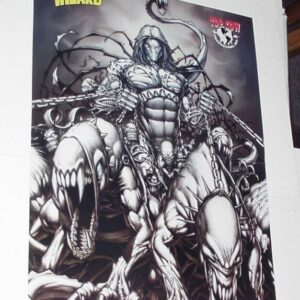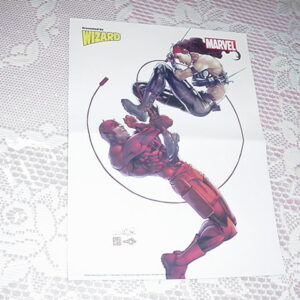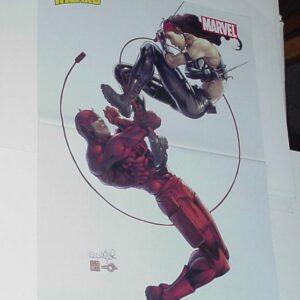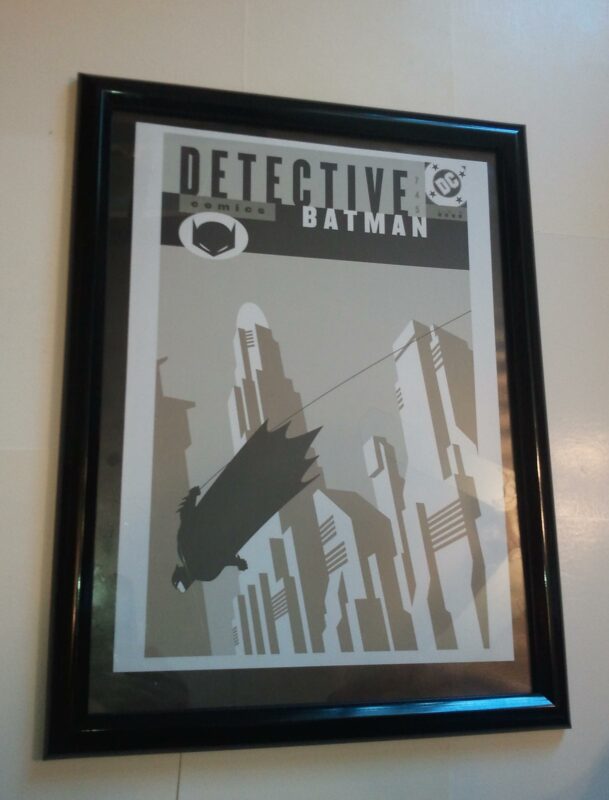Batman Poster #31 FRAMED Detective Comics #745 (2000) Dave Johnson
$74.99
Description
You are purchasing the item pictured, framed. Priority mail, tracking and $50 insurance is included with purchase. Item will be bagged to protect from dust, packed in packing peanuts and boxed. Just open box and hang it on the wall…makes a perfect gift!
Lovingly dubbed the batclaw by Batman, the grapple gun shoots out a claw shaped projectile on a retractable high-tensile cord, which grabs onto a surface. Then, this cord pulls Batman to his target. He recently received a boost upgrade, launching him high into the air above the target point if he desires (so Batman can glide from there). The grapple gun can also pull down walls, grab enemies and pull them closer, or pull guns straight out of their hands. It is not kept in the belt itself. Rather, it magnetically attaches to it. Batman uses a large arsenal of specialized gadgets in his war against crime, the designs of which usually share a bat motif. Batman historian Les Daniels credits Gardner Fox with creating the concept of Batman’s arsenal with the introduction of the utility belt in Detective Comics #29 (July 1939) and the first bat-themed weapons the batarang and the “Batgyro” in Detective Comics #31 and #32 (September; October 1939). Batman’s primary vehicle is the Batmobile, which is usually depicted as an imposing black car with large tailfins that suggest a bat’s wings. Batman’s other vehicles include the Batplane (aka the Batwing), Batboat, Bat-Sub, and Batcycle. In proper practice, the “bat” prefix (as in batmobile or batarang) is rarely used by Batman himself when referring to his equipment, particularly after some portrayals (primarily the 1960s Batman live-action television show and the Super Friends animated series) stretched the practice to campy proportions. The 1960s television series Batman has an arsenal that includes such “bat-” names as the bat-computer, bat-scanner, bat-radar, bat-cuffs, bat-pontoons, bat-drinking water dispenser, bat-camera with polarized bat-filter, bat-shark repellent bat-spray, and bat-rope. The storyline “A Death in the Family” suggests that given Batman’s grim nature, he is unlikely to have adopted the “bat” prefix on his own. Batman keeps most of his field equipment in a utility belt. Over the years it is shown to contain a virtually limitless variety of crime-fighting tools. Different versions of the belt have these items stored in either pouches or hard cylinders attached evenly around it. A typical major exception to the range of Batman’s equipment are conventional firearms, which he refuses to use on principle considering that weapon class was the instrument of his parents’ murder. Modern depictions of Batman have him compromise for practicality by arming his vehicles mainly for the purpose of removing obstacles or disabling enemy vehicles. A onetime art director and character designed for the Cartoon Network’s animated series Ben 10, the mercurial Dave Johnson, brings a graphic artist’s sense of composition and typography to the craft of cover design. Covers like this one can exist as stand-alone pieces of art and are increasingly prized by collectors. “I was pretty lucky early on, I guess somebody recognized that I could actually design a halfway decent cover, so I got to do most of my own covers early on. When it finally came to the point when I realized I couldn’t make a living drawing interiors- I was just too slow and it was just taking too much out of me- doing covers was a nice little option. What really sealed the deal was getting a job in animation. Have a forty-hour week dedicated to that job pretty much guarantees that I don’t have the time to do interiors. And frankly, interiors takes so much effort to do for do little pay-off when I can do a cover and get as much, if not more, exposure for doing the cover than doing all of the interiors. I’ve always been more of a sigular image artist anyway. I think my storytelling is all right, but I tent to like to get in and get out because I get bored real easy, and when you’re drawing a huge comic book project and you’re drawing the same characters over and over again, it tends to wear on me pretty bad. Makes Dave an unhappy boy. Covers are a nice little solution to that problem.”- Dave Johnson. An officially ordained Methodist Deacon. “Reverend” Dave Johnson may be best known for his minimalist covers on the noir Vertigo series, 100 Bullets. He has done all 100 covers. He has also done a number of covers for DC Comics, primarily Batman and Detective Comics. Dave also worked with Erik Larsen on the mini-series Superpatriot: Liberty & Justice. He is also known for his work with Marvel on Deadpool. Dave is the principal founder of “Drink and Draw”, a get-together of professional artists that spawned an art book by the same name. Mr. Johnson earned the 2002 Eisner Award for Best Cover Artist. He was also nominated for an Eisner in 2004 for his work on the critically acclaimed DC Elseworlds miniseries Superman: Red Son, which is now a perennial best seller in graphic novel form.
>PAN>Frame is shrinkwrapped until time of purchase. Ships boxed with packing peanuts.
THE PERFECT GIFT!
Related products
-

Darkness Poster # 4 Dale Keown Darklings in Chains Pitt Hulk
$29.99 Add to cart -


Captain America Poster # 9 In Chains by John Cassaday Issue 8
$29.99 Add to cart -


X-Men Poster #36 Mystique Joseph Michael Linsner Dawn
$34.99 Add to cart -


Daredevil vs Elektra Poster Ultimate Salvador Larroca
$29.99 Add to cart




